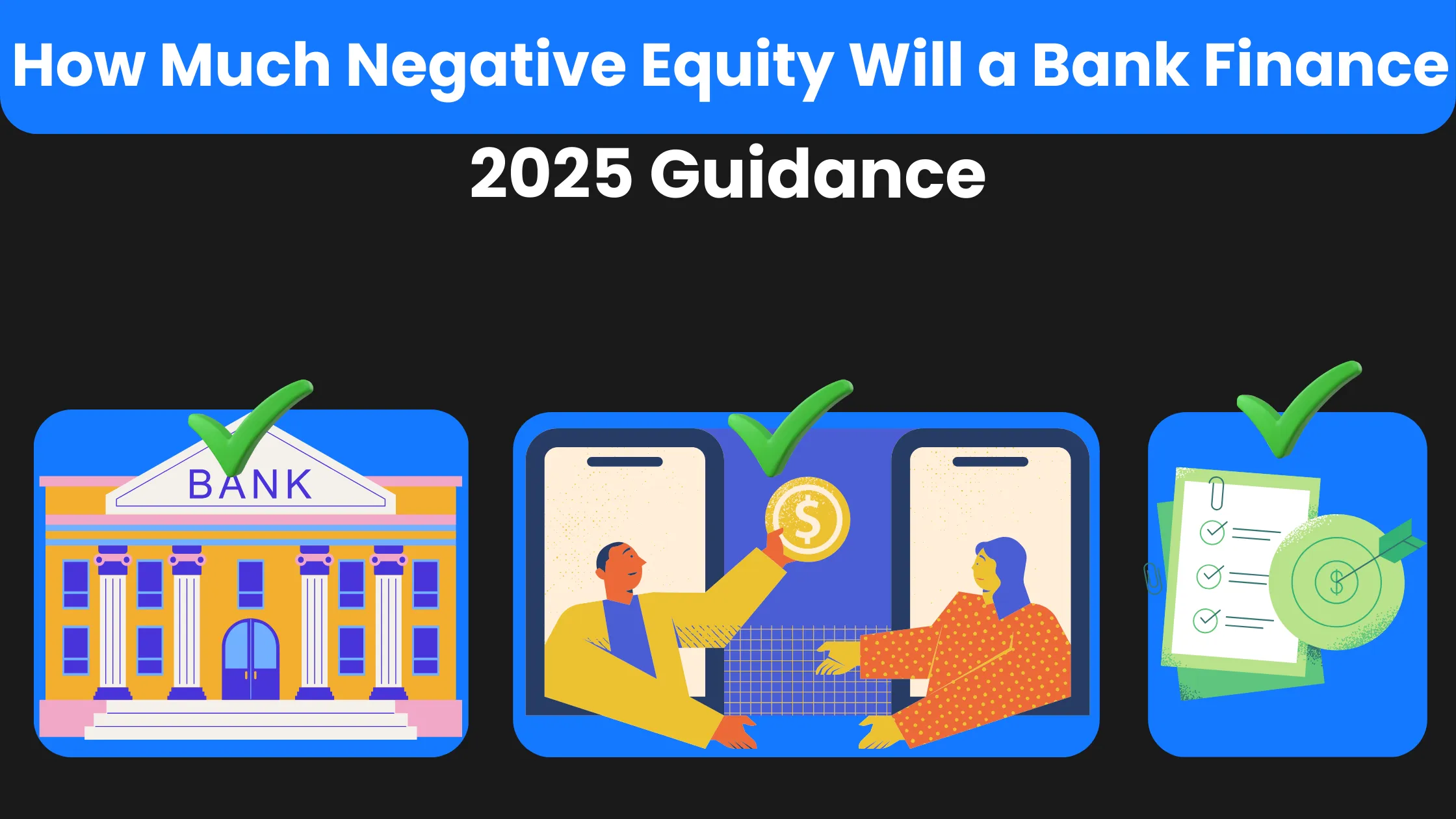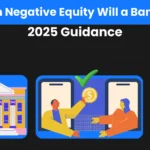How Much Negative Equity Will a Bank Finance in 2025: In today’s world, owning a home or investing in real estate often comes with the challenge of negative equity. Negative equity happens when the value of your asset, like a property, falls below the amount you owe on the mortgage. For many homeowners, this situation can create a lot of stress, especially when financial institutions are involved. As we head into 2025, many people are wondering: How much negative equity will a bank finance? Let’s explore this question, the factors at play, and what it means for homeowners and borrowers.
What is Negative Equity?
Before diving into what banks are willing to finance, let’s define negative equity. It occurs when the market value of a property is less than the outstanding mortgage balance. For example, if you owe $250,000 on a mortgage but the property is only worth $220,000, you have $30,000 in negative equity. In other words, you owe more than what your property is worth.
Negative equity can happen for various reasons, such as falling property prices, changes in interest rates, or personal financial issues. When homeowners find themselves in this situation, they may feel stuck or unsure about their options.
What Do Banks Look at When Financing Negative Equity?
In general, banks and lenders are cautious when it comes to financing negative equity. After all, they are taking a risk by lending money to someone whose asset has decreased in value. So, how much negative equity will they finance? The answer largely depends on a few key factors:
1. Loan-to-Value Ratio (LTV)
The Loan-to-Value ratio is a critical factor in determining how much the bank is willing to lend. The LTV ratio is calculated by dividing the amount of the loan by the appraised value of the property. A higher LTV indicates a higher risk for the lender.
In the past, banks were willing to finance higher LTVs, even up to 100% in some cases. However, with the lessons learned from the housing crisis of 2008, most banks today are more conservative and prefer an LTV ratio of around 80%. In situations of negative equity, the bank might only finance a portion of the difference between the property value and the loan balance, depending on the circumstances.
2. Borrower’s Creditworthiness
Banks also consider the borrower’s creditworthiness before making decisions about negative equity financing. If a borrower has a strong credit score and a history of making consistent payments, banks may be more inclined to offer financial help, even in situations of negative equity. Conversely, a borrower with a low credit score may face higher interest rates or even be denied further financing.
3. Government Programs & Regulations
Governments can play a significant role in how much negative equity a bank is willing to finance. In many countries, government-backed programs exist to help homeowners with negative equity, especially in times of financial crisis. These programs may allow borrowers to refinance or restructure their mortgage in a way that is beneficial for both the homeowner and the bank.
For instance, in the U.S., programs like the Home Affordable Refinance Program (HARP) helped homeowners with negative equity during the 2008 financial crisis. As we move into 2025, it’s possible that governments will introduce new programs or extend existing ones to support borrowers in negative equity situations.
4. Type of Mortgage and Property
The type of mortgage and property you have also affects the financing decision. For example, in the case of an adjustable-rate mortgage (ARM), the risk increases if property values drop, as monthly payments may become unaffordable. On the other hand, with a fixed-rate mortgage, the bank may be more willing to finance negative equity, assuming the borrower can afford the payments.
Additionally, the type of property (e.g., a residential home vs. an investment property) can influence the bank’s decision. Investment properties are typically seen as riskier by banks, and they might be less willing to finance negative equity in those cases.
What Will Banks Be Willing to Finance in 2025?
Looking ahead to 2025, several trends are shaping the future of negative equity financing. Banks are expected to continue being cautious, especially in markets where property values are unstable. With the global economy still recovering from the impacts of the COVID-19 pandemic, economic shifts could lead to a more cautious lending environment.
- More Conservative Lending Practices: Given the lessons learned from past financial crises, banks will likely maintain conservative lending practices in 2025. They may require higher down payments, lower LTV ratios, and stricter credit requirements for those in negative equity situations.
- Government Intervention and Programs: Governments may step in to help homeowners with negative equity, especially in areas where housing markets have been significantly affected. This could include subsidies, incentives for lenders, or other programs designed to reduce the burden on homeowners facing negative equity.
- Digital and AI-Assisted Decision Making: Advances in technology, such as artificial intelligence (AI) and machine learning, may also play a role in how banks assess negative equity situations. AI could help banks better assess risk and determine whether to finance a negative equity scenario, taking into account a variety of factors that traditional methods might overlook.
- Longer Loan Terms: In some cases, banks may offer longer loan terms to borrowers in negative equity situations. Extending the length of the loan can reduce monthly payments, making it easier for borrowers to manage their debt despite having negative equity.
How Can Homeowners Deal with Negative Equity?
If you find yourself facing negative equity in 2025, there are several strategies to consider.
- Refinance: If you’re eligible, refinancing your mortgage might help reduce your monthly payments or interest rate.
- Loan Modification: Contact your lender to discuss potential loan modification options, such as changing the terms of your mortgage.
- Government Assistance: Look into government programs that may offer relief for homeowners with negative equity.
- Sell the Property: In some cases, selling the property and downsizing may be an option, especially if market conditions are favorable.
Conclusion
As we move into 2025, banks are likely to continue their cautious approach to financing negative equity. While government-backed programs and individual financial circumstances can play a role in how much negative equity a bank will finance, borrowers should be prepared for more stringent lending standards. If you’re facing negative equity, it’s essential to explore your options and work with your lender to find a solution that works for you. Understanding the factors that influence bank decisions will help you make informed choices and protect your financial future.









